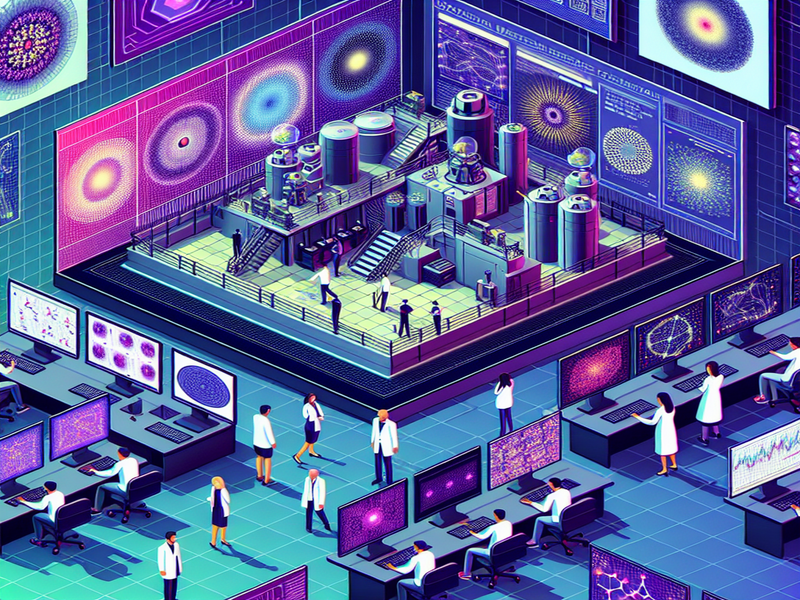- Updated: March 27, 2025
- 4 min read
Exploring Monocular Depth Estimation with Intel’s MiDaS Model on Google Colab
Unveiling the Power of Monocular Depth Estimation with Intel’s MiDaS Model
In the realm of artificial intelligence and machine learning, monocular depth estimation emerges as a groundbreaking technique that allows machines to perceive depth from a single image. This capability is not only revolutionary but also pivotal for numerous applications, ranging from autonomous vehicles to augmented reality. In this article, we delve into the intricacies of monocular depth estimation, spotlighting the Intel MiDaS model, and exploring its practical implementation on Google Colab.
The Significance of Monocular Depth Estimation
Monocular depth estimation is a transformative AI technology that empowers machines to understand the spatial dimensions of the environment using a single camera. This technology mimics human vision, enabling machines to interpret depth and distance, which is crucial for applications in robotics, navigation, and beyond. By leveraging the power of AI, monocular depth estimation opens up a plethora of possibilities, making it a cornerstone in the evolution of intelligent systems.
Overview of Intel’s MiDaS Model
Intel’s MiDaS model stands at the forefront of monocular depth estimation. Developed by Intel Labs, MiDaS leverages deep learning to accurately predict depth from a single image. Its architecture is designed to handle a wide range of scenarios, making it a versatile tool for developers and researchers. The model’s robustness and precision make it an ideal candidate for real-world applications, where depth perception is a critical component.
Setting Up MiDaS on Google Colab: A Step-by-Step Guide
To harness the power of the MiDaS model, one can easily set it up on Google Colab, a cloud-based platform that offers a seamless environment for running machine learning models. Here’s a step-by-step guide to get you started:
- Install Necessary Libraries: Begin by installing essential libraries such as PyTorch, OpenCV, and Numpy. These libraries form the backbone of the MiDaS model’s functionality.
- Clone the MiDaS Repository: Use Git to clone the official MiDaS repository. This step ensures you have the latest version of the model and its dependencies.
- Import Required Components: Import the necessary components from the MiDaS package. This includes the model architecture and utility functions for preprocessing and visualization.
- Set Up the Model for Inference: Load the pre-trained MiDaS model and configure it for inference. This involves setting the model to evaluation mode and preparing the input data.
- Image Preprocessing: Preprocess your images to match the input requirements of the MiDaS model. This typically involves resizing and normalizing the images.
- Model Inference: Run the model on your preprocessed images to obtain the depth maps. The inference process transforms the input images into depth predictions.
- Visualization of Depth Maps: Utilize visualization tools to render the depth maps. This step allows you to visually assess the depth estimation results.
By following these steps, you can effectively implement the MiDaS model on Google Colab and begin exploring its depth estimation capabilities.
Potential Applications of Monocular Depth Estimation
The applications of monocular depth estimation are vast and varied, offering transformative potential across multiple industries:
- Autonomous Vehicles: Depth estimation is critical for self-driving cars, enabling them to navigate complex environments safely.
- Augmented Reality: By understanding depth, AR applications can create more immersive and realistic experiences.
- Robotics: Robots equipped with depth perception can interact more effectively with their surroundings, enhancing automation capabilities.
- Healthcare: In medical imaging, depth estimation can improve the accuracy of diagnostics and treatment planning.
These applications highlight the transformative impact of monocular depth estimation, underscoring its significance in the advancement of AI technology.
Conclusion and Future Prospects
In conclusion, monocular depth estimation, particularly through Intel’s MiDaS model, represents a significant leap forward in AI technology. Its ability to perceive depth from a single image opens up new avenues for innovation in various fields. As AI continues to evolve, the potential applications of depth estimation will expand, driving further advancements in technology and industry.
For those interested in exploring more about AI integrations and applications, the ChatGPT and Telegram integration offers insights into combining AI with communication platforms. Additionally, the OpenAI ChatGPT integration showcases how AI can enhance conversational experiences.
As we look to the future, the possibilities for monocular depth estimation and AI technology are boundless, promising a new era of intelligent systems and applications.

